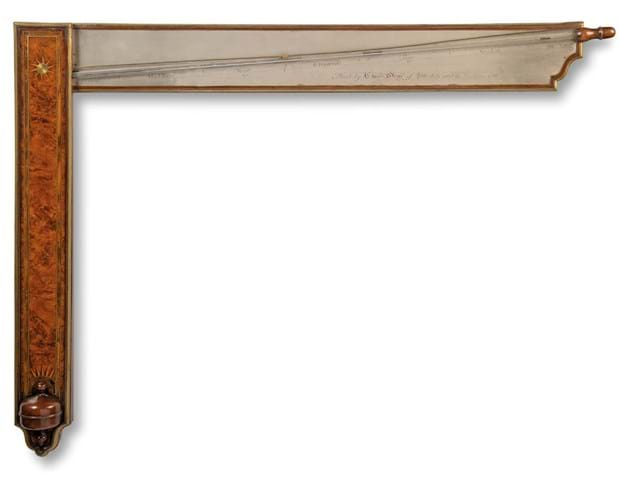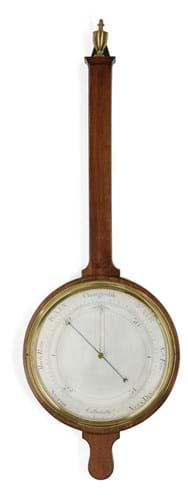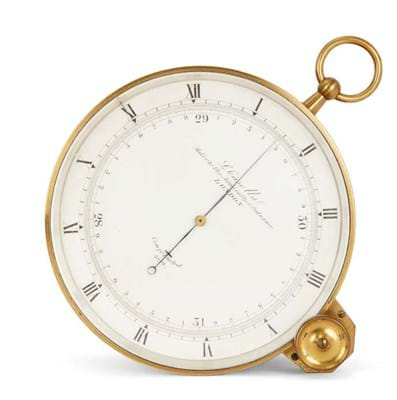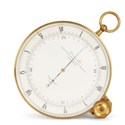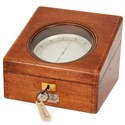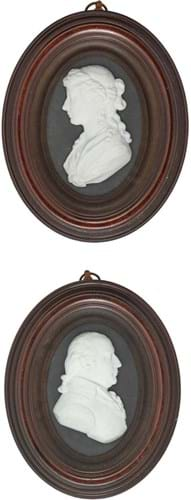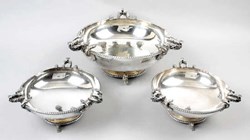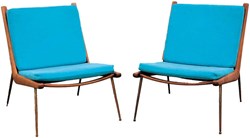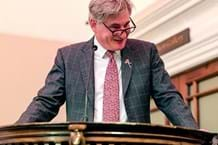A passion of polymath banker and art collector Sir Nicholas Goodison (1934–2021), barometers were predictably a major feature of the residue of his collection offered at Roseberys’ (25% buyer’s premium) south London sale.
Goodison, a major City figure in banking and a former chairman of the London Stock Exchange, was also renowned in the world of arts and antiques as a chairman of the Courtauld, president of the Furniture History Society and a published world authority on barometers.
The market in them has faded, partly down to fashion but also because of the 2007 EU laws banning trade in mercury.
Barometers over 50 years old escape the bar but the problems of supply and parts for repairs and restoration remain.
At the very top of the market substantial five-figure prices can be achieved, as was seen among those at Christie’s £8m auction in May of the art and antiques from Goodison’s Mayfair residence. However, of the 18 barometers offered in that sale only 11 were sold.
New angle
Two of the dozen barometers among the 112 Goodison lots at the Roseberys rooms in West Norwood on July 20 were reoffers from King Street. This time they were keenly sought at much-reduced reserves.
They included one of the collecting field’s most desirable forms: a brassmounted walnut angle barometer signed Charles Orme of Ashby-de-la- Zouch and dated 1736.
As Goodison noted in his standard reference work English Barometers 1680-1860 (first published in 1969), Orme made his name making angle barometers in Leicestershire.
“Orme owes his eminence to his successful exploitation of the angle tube principle,” wrote Goodison.
“Several angle barometers signed by him survive and I have yet to see any other type bearing his signature.” Christie’s sale in May had included a very rare Orme angle barometer with triple tubes from 1741 that allowed the rise and fall of the mercury to be recorded over 5ft instead of the customary length of stick barometer. It had sold for £9500. The example at Roseberys with a ‘sign-post’ form case was a more standard single tube example but is the earliest known of Orme’s angle barometers. Unsold at £8000- 12,000 in May, it got away in July at £4100 to a London bidder.
A c.1770 stick barometer, signed Joseph Finney, Liverpool – the maker who made the angle barometer now in the Science Museum – also sold to a London buyer. Housed in a brass-mounted 3ft 9in (1.14m) tall mahogany frame, it more than doubled the lower estimate at £3200. Acquired from Lewes dealer Anthony Woodburn in 2001, it had failed at £10,000-15,000 at Christie’s.
Goodison owned several outstanding wheel barometers, including a masterwork by Georg Adams, c.1765, which was formerly in the Samuel Messer collection that took £25,000 at Christie’s.
Sold here at £2800 was a late 18th century work signed to the 14in (35cm) silvered dial C. Betally, London for Christopher Betally, one of a number of fine Italian makers who brought their skills to Georgian Britain.
The 3ft 4in (1.04m) mahogany case carried the trade label of J. Somalvico & Co. Makers London 18 Charles St. Hatton Garden. It was guided at £1000-1500 and sold to a UK buyer.
Dealer’s retirement
A second expert’s consignment to the Roseberys sale was the contents of the Chislehurst shop owned by Michael Sim since 1983.
Another polymath with a love of barometers, Sim had been director of the Royal Society of Chemistry before becoming a dealer. He is now retiring.
Known for his expertise in Georgian furniture and artefacts, his special interest in the scientific aspects of restoration led his reputation-making identification of a masterpiece by the great Turin cabinet-maker Pietro Piffitti (1701- 77). The superb pier table, made in 1732-34 and restored 1860-70, is now in the V&A.
Among his 273-lot consignment to West Norwood was a brass aneroid barometer, inscribed to the silvered and engraved dial L. Casella, Maker to the Admiralty & Ordnance, London.
Edinburgh-born Louis Pascal Casella (1812-97) was a partner of renowned 19th century London scientific apparatus maker Cesare Tagliabue, whose clients included Charles Darwin and Dr David Livingstone.
His barometer, resembling a 5in (13cm) pocket watch, was in a glazed and fitted mahogany case with an applied plaque reading Felixstowe 2nd June 1884. It doubled the lower estimate, selling to a UK bidder at £1600.
Glaswegian worthies
Another Scot with a scientific turn to interest Sim was James Tassie (1735-99).
Sometime Glasgow stonemason turned art student turned inventor, Tassie made his name and fortune using his scientific brain to help discover an enamel hard enough and with a texture perfect for making paste jewellery.
After a slow start in London, business soared with aristocratic clients from Catherine the Great down commissioning more than 20,000 pieces.
Six years before his death he began a similarly successful line in highrelief white paste portrait medallions, either from life or from drawings of his subjects, casting them in wax and then producing them in enamel.
The 12 examples from the Sim consignment depicted Glaswegian worthies and sold at prices from around £300-750 each for a total of £6500.
Top-seller was a pair of portraits of a Glaswegian banker and landowner and his wife. Typical of Tassie’s works, the 3in (7.5cm) high portraits in oval wooden frames were inscribed Arch.[ibald] Grahame, 1795, Tassie F[ecit], and Jane Grahame, 1796, Tassie F.
Pitched at £700-1000, the pair went to a Scottish bidder at £1300.


